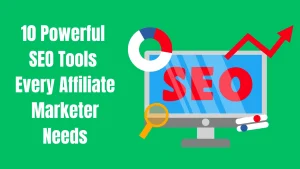Email Marketing Explained: How It Works and Why Your Business Needs It
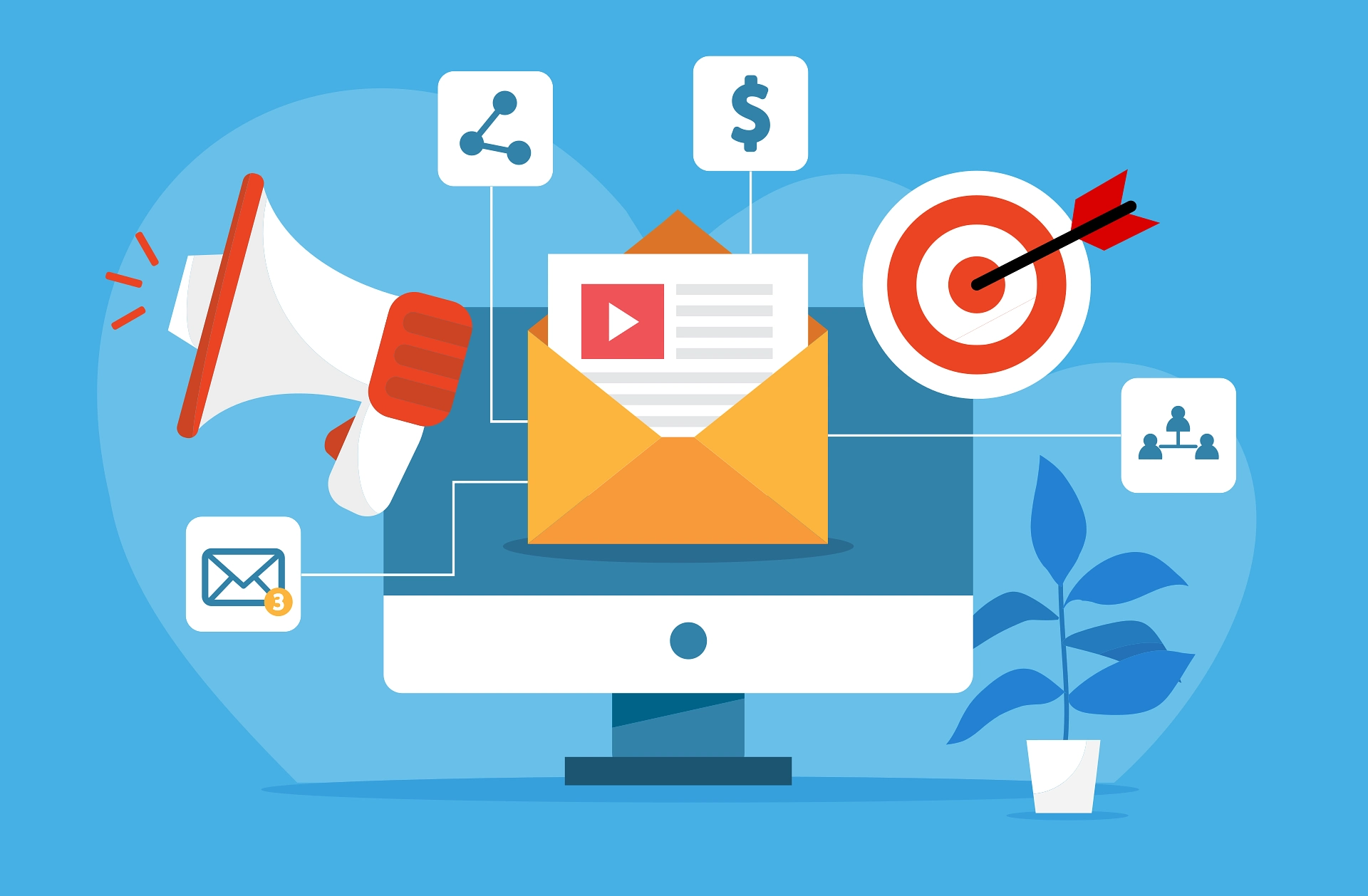
If you’re not using email marketing, you’re leaving money on the table—plain and simple.
Social media algorithms change overnight, and organic reach is unpredictable. But email? It gives you direct access to your audience, allowing you to build relationships, nurture leads, and drive consistent sales.
Email marketing goes beyond sending promotional emails—it’s a proven revenue driver. Back in 1978, Gary Thuerk, A.K.A. the father of spam, sent the first-ever commercial email to 400 people and made $13 million in sales. That moment proved email’s power.
Fast forward to today, over 333 billion emails are sent daily, and the numbers keep climbing. With an average return of $44 for every $1 spent, email marketing remains one of the most profitable marketing channels.
A well-crafted email strategy keeps your business top-of-mind, delivers personalized experiences, and converts subscribers into loyal customers.
Whether you run an online store, a service-based business, or an affiliate site, mastering email marketing can transform your growth.
In this guide, we’ll break down how email marketing works, why it’s so powerful, and how to use it effectively for your business. Let’s dive in.
If you are looking to improve your email marketing game then I recommend “300 Email Marketing Tips” by Meera Kothand is a must-read. It’s packed with practical strategies for writing engaging emails, automating campaigns, and boosting conversions.
Key Takeaways
- Email marketing remains one of the most effective digital marketing strategies, offering direct communication with your audience.
- The first email campaign in 1978 generated $13 million in sales, proving its power early on.
- Over 333 billion emails are sent daily, with projections reaching 392.5 billion by 2026, highlighting its continued growth.
- Email marketing delivers an impressive ROI of $44 for every $1 spent, making it one of the most cost-effective marketing channels.
- 59% of marketers rely on email as their top source of ROI, reinforcing its effectiveness in driving revenue.
- Quality matters more than quantity—a well-maintained email list performs better than sending mass emails to unengaged recipients.
- Segmentation and personalization boost engagement, helping businesses send relevant content to the right audience.
- Automation streamlines campaigns, ensuring timely follow-ups, abandoned cart recovery, and lead nurturing.
- Email marketing provides ownership and control, unlike social media platforms where algorithms dictate visibility.
What Is Email Marketing?
Email marketing is one of the most powerful digital marketing strategies out there. In a simple explanation, email marketing is all about sending targeted emails to people who have shown interest in your business; whether they’re leads, customers, or subscribers.
As I mentioned above, email marketing is not just about blasting out promotional messages. When done right, it’s a strategic and relationship-building tool that nurtures leads. Keeping your audience engaged, and driving conversions over time.
Now, think of it like this: when someone joins your email list, they’re inviting you into their inbox. That’s personal. And unlike social media, where algorithms control your reach, emails land directly in front of your audience.
Be it a welcome sequence, a newsletter, a promotional campaign, or an automated follow-up, every email is an opportunity to build trust and encourage action.
The beauty of email marketing is its versatility. You can segment your audience based on their interests, automate personalized sequences, and track key metrics like open rates and conversions to constantly refine your approach.
It’s cost-effective, scalable, and delivers one of the highest ROIs of any marketing channel. If you’re running a business, email marketing isn’t optional; it’s very essential.
Here are some important facts about email marketing:
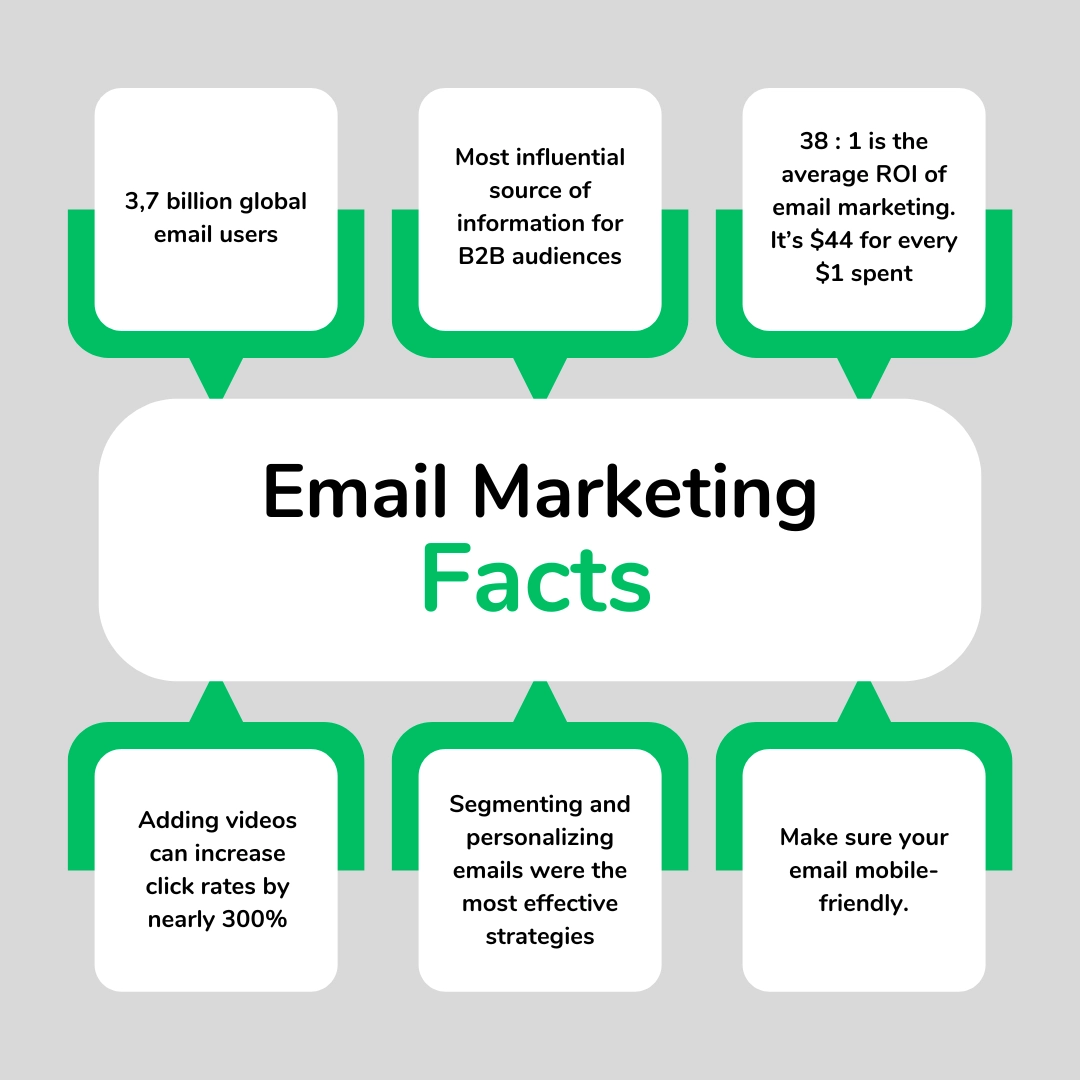
The Advantages of Email Marketing
Email marketing is a strong tool for businesses to connect with customers. It offers many benefits, like better engagement and a high return on investment (ROI).
1. Building Customer Relationships
Email marketing helps build strong customer ties. Personalized content, like using names or tailoring offers, boosts loyalty. It’s shown that 59% of marketers think email helps in buying decisions.
This way, businesses can connect personally with their audience. It also builds trust in the brand.
2. Driving Traffic and Engagement
Email marketing is great for getting people to visit your website. By adding direct links, customers can easily find what you offer. This can lead to more engagement.
Segmented campaigns can even increase revenue by up to 760%. This shows how targeted emails are key to success.
3. High Return on Investment (ROI)
Email marketing is very cost-effective, with an ROI of up to $44 for every dollar spent. It’s a budget-friendly way to reach many people. Regular emails also keep your brand in customers’ minds, leading to more sales and keeping customers.
The Disadvantages of Email Marketing
Email marketing has many benefits, but it also has downsides. Knowing these can help you succeed in using this channel.
1. Spam Concerns
Spam is a big problem with email marketing. Emails might end up in junk folders because of spam filters. Breaking rules like GDPR and CAN-SPAM can make your emails get flagged. This can really hurt how well your emails get delivered.
Also, if people start unsubscribing a lot, your list quality goes down. This makes future campaigns harder.
Spam filters can inaccurately label your marketing efforts as spam, affecting deliverability and potential customer interactions. To avoid this, focus on clean email lists, personalized content, and compliant sending practices.
2. Delivery Issues and Email Size
Getting emails delivered can be tough, mainly if they’re too big or have the wrong addresses. Bad addresses can make your campaign less effective by causing more bounces and lower engagement. Make sure your emails are the right size and look good to improve delivery chances.
3. Competition in Inboxes
With so many emails coming in, it’s hard to stand out. Your email needs to be interesting and look good to grab attention.
Personalized emails—like those with tailored subject lines, get opened more often. But not everyone uses this approach well. Knowing the competition is key to making emails that grab people’s attention.
Email Marketing Types and Examples
Learning about different email marketing types can boost your strategy. Each type has its own purpose, helping you connect better with your audience.
Here are some key types of email marketing, along with examples to show how they work:
1. Welcome Emails
Welcome emails are key for making a good first impression on new subscribers. They aim to make new followers feel valued and connected. For example, Airbnb uses welcome emails to introduce users to their platform and show off its features.
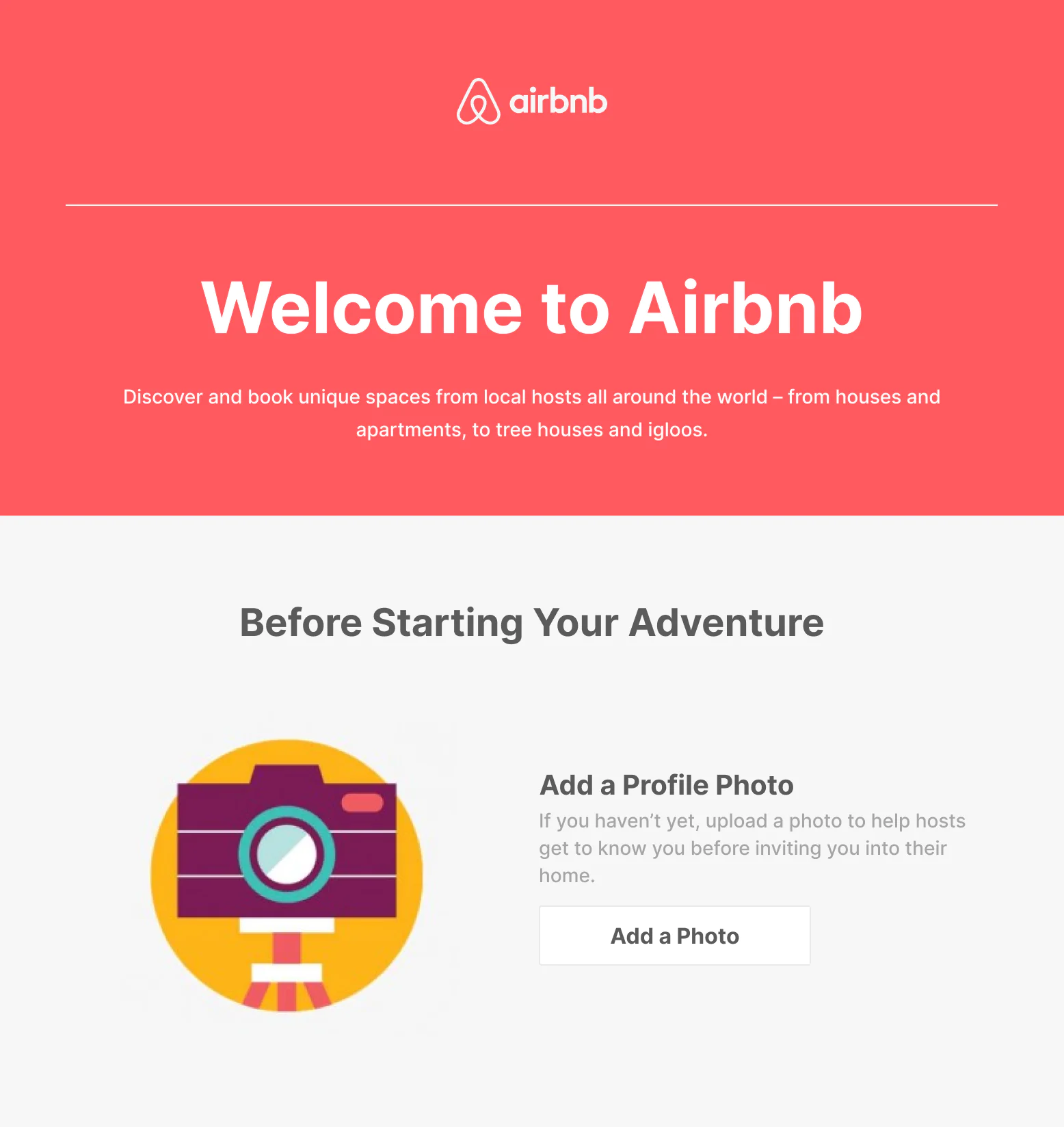
This approach leads to more engagement over time. In fact, reading a welcome email can lead to 40 percent more content reading from a sender in the next 180 days.
2. Newsletter Emails
Newsletter emails keep your audience updated on the latest news and content. HubSpot uses newsletters to share valuable insights, keeping subscribers engaged. Checking these emails can increase click-through rates for specific pages, showing their value.
3. Promotional Emails
Promotional emails highlight special offers, new products, or seasonal sales. When personalized, these emails can really grab attention. For instance, brands often send out tailored promotional emails to boost sales during holidays.
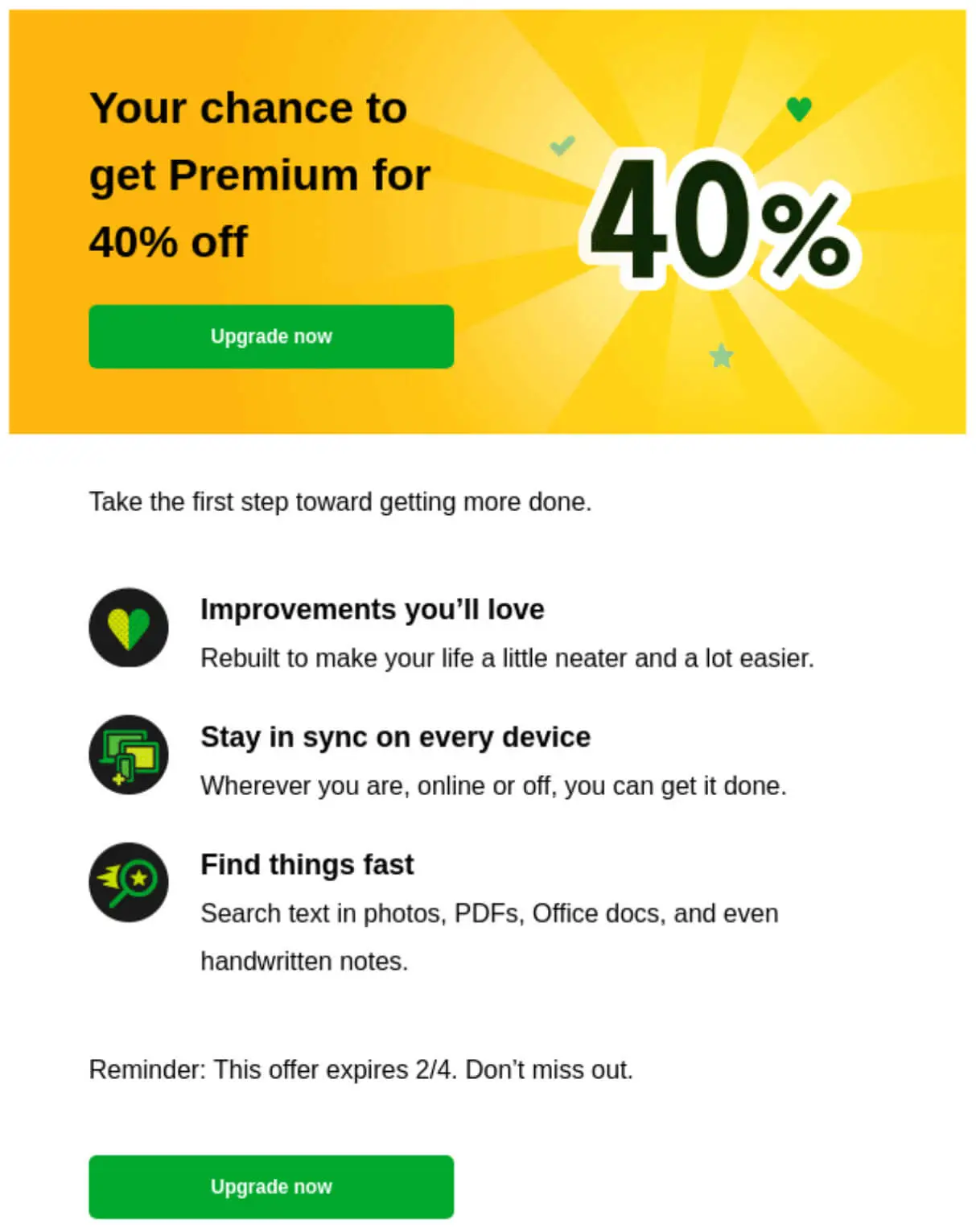
Notably, 89% of marketers rely on email for lead generation, making promotional emails crucial for a strong marketing plan.
4. Survey Emails
Survey emails are great for getting feedback from your subscribers. By asking for opinions, you can improve your services and products. Targeting inactive customers with win-back emails is also key for keeping relationships strong.
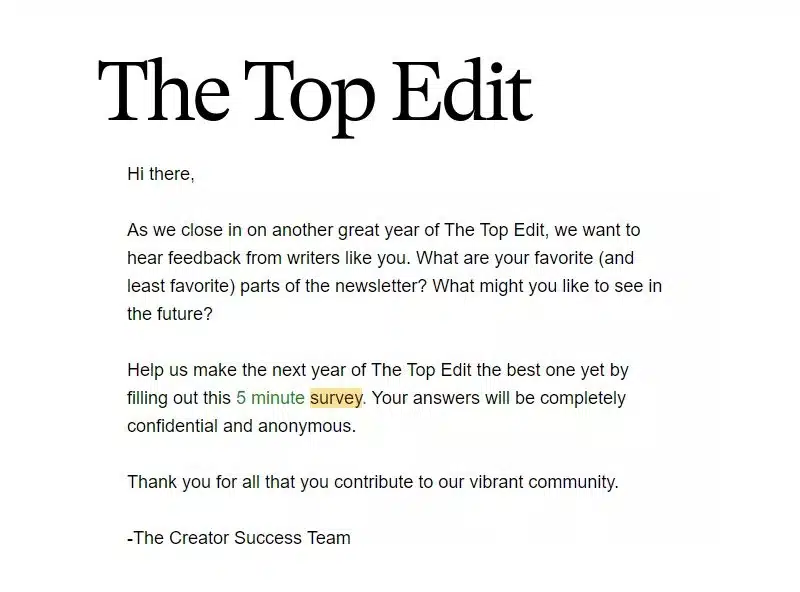
How Does Email Marketing Work?
Email marketing is basically like having a conversation with your audience, except it happens in their inbox instead of over coffee.
It all starts with getting people to sign up (list building), usually by offering them something cool like a free guide, a discount, or exclusive content they actually want.

Once they’re in, you don’t just blast random emails and hope for the best (at least, you shouldn’t). Instead, you send messages tailored to what they care about, maybe a welcome email, a special offer, or a reminder that they left something in their cart.
The secret sauce is to keep it real. Nobody likes robotic, salesy emails. Write like a human, make it valuable, and always have a clear next step.
When done correctly, email marketing isn’t just about selling but about building trust, keeping people engaged, and turning casual subscribers into loyal fans (and paying customers).
Essential Components of Email Marketing
To understand email marketing, you need to know its parts. A good strategy includes:
- Targeted email lists that match your audience’s interests.
- Engaging content that encourages action from subscribers.
- Analytics to track how well your emails are doing, helping you get better.
1. Email List Building
Building an email list is key to success. It’s about attracting people who will not only read but also interact with your emails. Using lead magnets, like special offers, can help grow your list and keep people engaged.
Here’s How to Build a Strong Email List for Your Affiliate Marketing Business
You can also grab the “Build Your Email List” guide for more list-building strategies.
2. Email Service Providers (ESPs)
Email service providers are crucial for managing your campaigns. They offer tools for designing, scheduling, and analyzing your emails. They help your emails land in the inbox and give insights on how to improve.
Did you know as of 2021 email marketing had an ROI of 3,800%? And by 2027, its revenue is expected to hit 17.9 billion dollars. Using ESPs can greatly boost your online strategy.
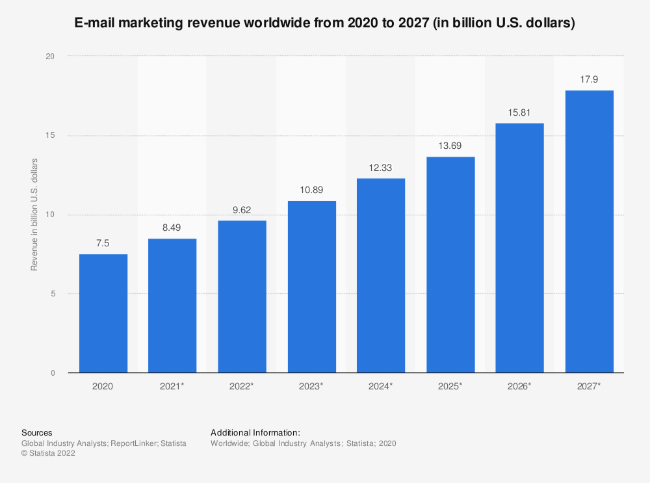
Email Marketing Strategies
Effective email marketing strategies can greatly improve your business’s reach and interaction. Focus on segmenting emails, personalizing them, and automating your campaigns. This way, you can connect with your audience deeply and boost sales.
1. Email Segmentation
Segmenting your email list means dividing it into groups based on different criteria. This could be demographics, behavior, or preferences. By doing this, you can make your campaigns more relevant to each group.
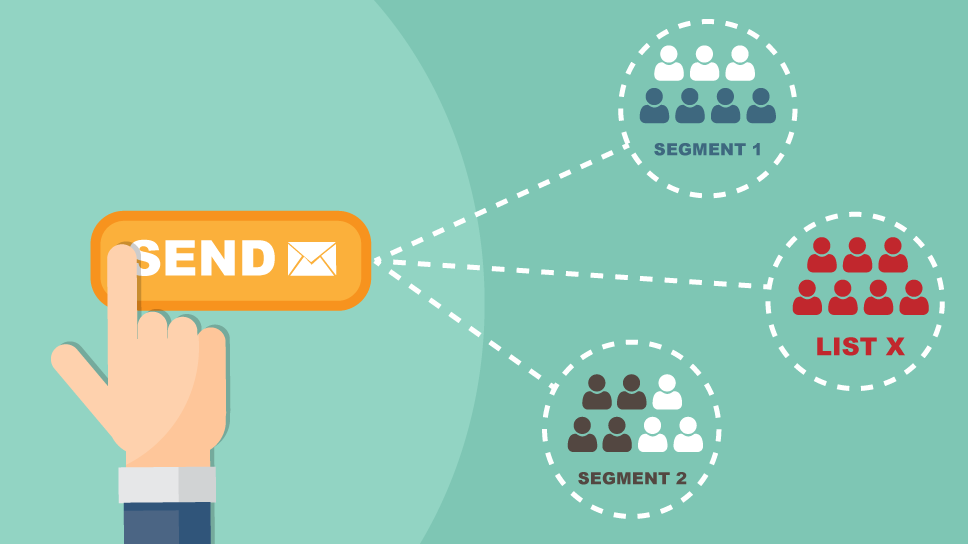
Targeted campaigns can lead to a 760% increase in email revenue. By 2025, there will be about 4.6 billion email users worldwide. This shows how focusing on specific segments can greatly improve your email marketing results.
2. Email Personalization
Personalization is key in email marketing. It makes your emails more engaging and effective. Personalized subject lines can increase open rates by 26%.
Personalized emails also lead to six times more transactions and can return $20 for every $1 spent. Making your emails relevant to your audience’s interests builds a stronger connection and encourages action.
3. Email Automation Techniques
Email automation sends timely and relevant emails based on user actions. It ensures your emails reach the right people at the right time, boosting engagement. Automated campaigns can drive conversions and build loyalty when done right.
As email marketing evolves, using these techniques will help you succeed in a competitive market.
| Strategy | Impact on Engagement | Potential ROI |
|---|---|---|
| Email Segmentation | Increases revenue by 760% | $42 for every $1 spent |
| Email Personalization | Boosts open rates by 26% | $20 for every $1 invested |
| Email Automation | Enhances conversion rates | Varies based on campaign |
Email Marketing Tools
Choosing the right email marketing tools can make or break your strategy. Whether you’re growing your list, automating campaigns, or boosting conversions, the right platform helps you do it all without the headache.
From beginner-friendly options to advanced automation powerhouses, Here are the top 6 tools that I’ve actually tested and I would recommend to you.
1. ActiveCampaign – The Automation King
If you’re serious about automation and personalization, ActiveCampaign is a no-brainer. It enables users to build advanced email sequences that send the right message at the perfect time.
Its CRM integration, predictive sending, and AI-powered insights help increase conversions like nothing else. If you’re in a high-ticket niche or want to maximize every lead, this tool is gold.
2. GetResponse – The All-in-One Workhorse
I recommend GetResponse to anyone who wants more than just email marketing. It has landing pages, webinars, automation, and even a funnel builder. I personally use it to build targeted email lists and segment audiences based on their interests.
I’ve also seen it work incredibly well for affiliates who needed a full marketing system without juggling multiple tools. Plus, their AI-powered email generator is a game-changer for those who struggle with writing emails.
3. Moosend – Budget-Friendly But Powerful
Moosend isn’t as hyped as some of the big names, but don’t let that fool you. I’ve tested it, and honestly, for the price, it’s one of the best-kept secrets in email marketing.
It’s got advanced automation, AI-driven recommendations, and solid eCommerce integrations—all without burning a hole in your pocket. If your audience includes small businesses or startups, this is an easy sell.
4. AWeber – Simple, Reliable, and Great for Beginners
I started with AWeber some years ago when I was new to email marketing, and it’s still one of the most user-friendly platforms out there.
It’s not as flashy as ActiveCampaign, but it’s rock-solid, easy to use, and perfect for beginners who just want to send emails without overcomplicating things.
Their automated sequences and split testing features make it a great option for affiliate marketers who are just getting started.
5. ConvertKit – The Creator’s Best Friend
If your audience includes bloggers, YouTubers, course creators, or influencers, ConvertKit is the best tool to recommend.
The automation is simple yet powerful, and their tagging system ensures every subscriber gets content that matters to them. It’s built for creators who want to monetize their audience effectively.
6. Mailchimp – The Popular Choice With a Free Plan
Mailchimp is one of the most well-known email marketing tools, and for good reason—it’s beginner-friendly and offers a free plan.
It’s great for affiliate marketers who are just getting started and need a no-cost way to build and manage an email list. It’s a solid entry-level option for email marketing.
Recommended reading: 12 Best Free Email Marketing Tools You Need For Your Affiliate Business
Which One Should You Choose?
It depends on your needs. Want advanced automation? ActiveCampaign is your best bet.
Need an all-in-one marketing suite? GetResponse has you covered.
On a budget? Moosend is a steal.
If you’re a beginner, AWeber or Mailchimp makes starting easy.
And if your audience includes content creators, ConvertKit is the way to go.
No matter which tool you choose, email marketing is non-negotiable if you want long-term success in affiliate marketing. The right platform will help you engage your audience, drive sales, and build a business that keeps growing.
Email Analytics: Measuring Success
It’s key to know how to measure email marketing success. Email analytics gives you insights into how well your campaigns are doing.
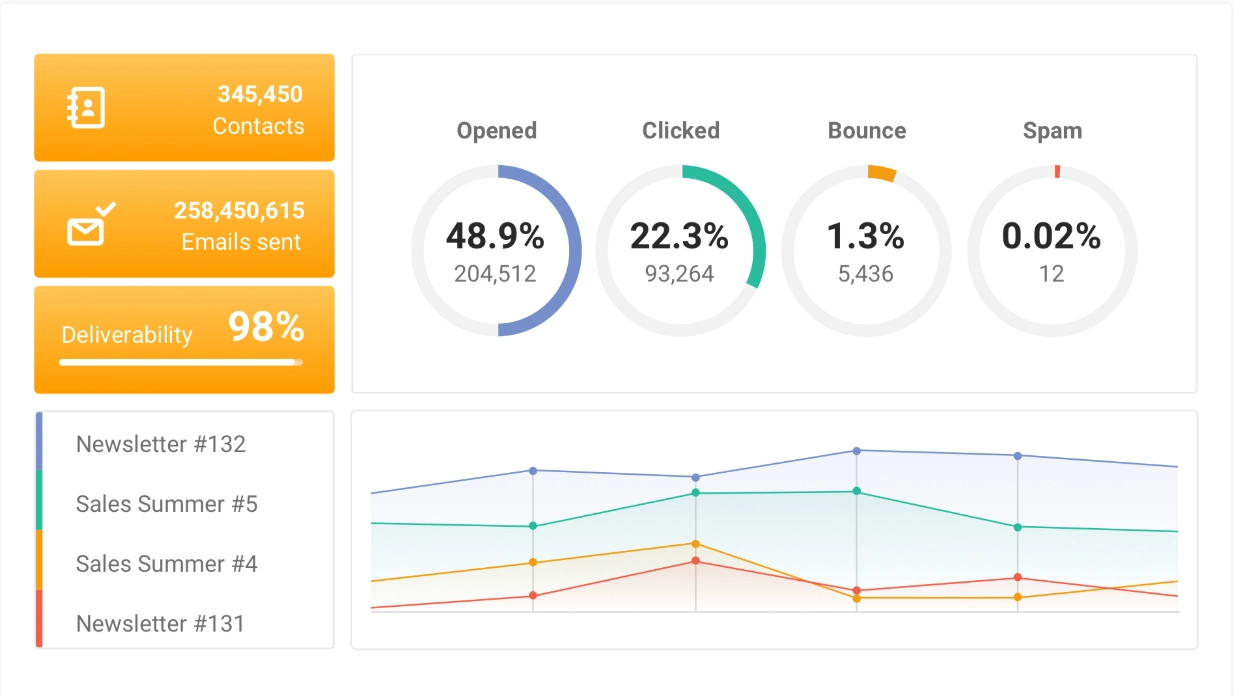
Important metrics include open rates, click-through rates, and conversion rates. Each metric offers a different view of how your audience is engaging with your emails.
1. Open Rates and Click-Through Rates: What They Really Mean
When you send an email campaign, two key metrics tell you how well it’s performing: open rates and click-through rates (CTR). But here’s the thing, open rates aren’t as reliable as they used to be, thanks to privacy updates like Apple’s Mail Privacy Protection (MPP).
2. Open Rates: Are People Actually Reading Your Emails?
The open rate measures the percentage of recipients who open your email. In the past, this was a great way to gauge engagement, but things have changed. As of March 2024, Apple’s MPP accounts for 55% of all email opens, meaning many “opens” are automatically tracked, even if the recipient never actually saw your email.
Despite this, 31% of marketers still rely on open rates to assess their campaigns. While it can still provide a rough idea of engagement, it’s no longer the most accurate indicator.
3. Click-Through Rates: A More Reliable Engagement Metric
Click-through rate (CTR) tells you how many people not only opened your email but also clicked on a link inside. This is a much stronger indicator of real engagement because it shows that your content sparked interest and action.
If people are clicking, it means your subject line did its job, and your email content was compelling enough to drive action. A high CTR means your emails are effective, while a low CTR signals that you might need to tweak your messaging, layout, or call to action.
What This Means for You
Given the impact of privacy updates, CTR is now one of the best ways to measure success in email marketing. While open rates can still provide some insight, your focus should be on crafting emails that drive clicks and conversions.
So, always test your subject lines, personalize your content, and make your CTAs impossible to ignore.
4. Conversion Rates: Measuring What Really Matters
At the end of the day, email marketing isn’t just about getting people to open or click but about driving real results. That’s where conversion rates come in.
What Are Conversion Rates & Why Do They Matter?
Conversion rate measures how many recipients took the desired action after receiving your email, whether that’s making a purchase, signing up for a webinar, or downloading a freebie.
Essentially, it tells you how effective your emails are at turning subscribers into customers. Tracking this metric gives you a clear picture of your return on investment (ROI) and whether your email strategy is actually working.
Since revenue is the ultimate goal for most email marketers, conversion rates are one of the most important numbers to track. In fact, 33% of marketers prioritize click-through rates (CTR) because strong engagement often leads to more conversions.
How to Improve Future Email Marketing Campaigns
The best email marketers aren’t just tracking numbers, they’re using them to refine and optimize their strategy. If your conversion rate is low, it might mean your call to action isn’t strong enough, your audience isn’t fully engaged, or you’re not targeting the right people.
A few ways to improve:
- Grow your list with high-quality leads (instead of just chasing numbers).
- Keep your audience engaged with valuable, personalized content.
- Monitor key indicators like unsubscribe rate and revenue per email (RPE) to understand what resonates with your audience.
Your conversion rate is the true measure of success in email marketing; so keep testing, adjusting, and improving to get the best results.
| Metric | Definition | Calculation |
|---|---|---|
| Open Rate | Percentage of emails opened by recipients | (Number of opens ÷ Total delivered emails) × 100 |
| Click-Through Rate (CTR) | Percentage of recipients who clicked links in the email | (Number of clicked emails ÷ Number of delivered emails) × 100 |
| Conversion Rate | Percentage of recipients who completed a desired action | (Number of conversions ÷ Number of delivered emails) × 100 |
| Unsubscribe Rate | Percentage of recipients who unsubscribed | (Number of unsubscribes ÷ Number of delivered emails) × 100 |
| Revenue per Email (RPE) | Revenue generated per email delivered | Total revenue ÷ Total delivered emails |
Effective email analytics is vital for measuring success and driving continuous improvement in your campaigns.
Email Deliverability: Ensuring Your Emails Get Seen
Understanding email deliverability is key to getting your emails noticed. Several factors impact your email campaign success. These include sender reputation and engagement rates.
Factors Affecting Deliverability
Your email-sending reputation is shaped by many things. Email engagements, like clicks and opens, play a big role. Spam complaints also matter a lot.
When people engage with your emails, they’re more likely to see them. This is better than ending up in spam filters. It’s also important to remove inactive contacts to boost your deliverability.
Using email authentication like SPF, DKIM, and DMARC helps fight spam and phishing. Choosing between shared or dedicated IP addresses affects costs and control.
Best Practices for High Deliverability
- Keep your email list clean by checking for outdated addresses and unengaged contacts.
- Slowly increase your email sending after switching domains to get better recognition.
- Always check your sending reputation to keep engagement rates high.
- Use A/B testing with tools like Marketing Hub Professional to improve your campaigns.
- Strive for an email deliverability rate of 85% or higher, aiming for 98% to 99%.
By following these tips, you can improve your email deliverability. This will help you reach your marketing goals.
Case Studies: Successful Email Marketing Campaigns
Examining real-world email marketing case studies reveals how well-planned campaigns drive impressive results. Here are three standout examples:
1. Fridja’s E-Commerce Success
Fridja, an e-commerce store, leveraged email marketing to promote a new product launch. Through targeted campaigns, they managed to sell 25% of their new stock directly via email, proving that a well-segmented list and compelling messaging can generate significant sales.
2. Pathpages: Turning Subscribers Into Customers
Pathpages took a data-driven approach, using behavior-based automation to send personalized content at the right time. By analyzing user interactions and automating follow-ups, they converted more subscribers into long-term, loyal customers.
3. LandCafe.pl’s Educational Email Series
LandCafe.pl demonstrated the power of value-driven content by launching an educational email series. Instead of pushing direct sales, they focused on informing their audience—leading to a 54% increase in sales. This case highlights how building trust through useful content can drive revenue.
Each of these examples proves that the right email strategy can transform engagement into real profits.
Future Trends in Email Marketing
Email marketing isn’t what it used to be, it’s getting smarter, more personal, and way more effective. People don’t want to see another generic sales pitch in their inbox. They expect emails that feel like they were written just for them. That’s where AI and personalization come in.
Businesses are already using AI to analyze customer behavior, predict what they want, and send emails at the perfect time. And it’s working.
Personalized emails get more clicks, more engagement, and more sales. Just as it’s just as simple as that. If you’re still sending one-size-fits-all emails, you’re leaving money on the table.
Another big shift is mobile-first email marketing. Over 62% of emails are opened on phones, which means if your emails aren’t mobile-friendly, they’re getting ignored.
No one wants to pinch and zoom just to read a subject line. Clean layouts, short copy, and tappable buttons are now non-negotiable.
Email is still one of the cheapest and highest ROI marketing tools out there. As long as you keep up with trends and focus on delivering value, email marketing will remain a powerful way to connect with your audience and grow your business.
Conclusion
Email marketing isn’t just some extra thing businesses do; it’s one of the most reliable and personal ways to reach people.
Social media platforms change their rules all the time, but your email list? That’s yours. No algorithms deciding who sees your content, no fighting for attention in a crowded feed. Just a direct line to your audience.
But here’s the thing, it only works if you do it right. Blasting out random emails won’t get you far. Success happens when you understand your audience, send emails that feel like they were written just for them, and give them a reason to open, read, and take action.
A well-crafted email can turn a subscriber into a paying customer, and a one-time buyer into someone who sticks with your brand for years.
If you haven’t tapped into email marketing yet, now’s the time. Start small, test what works, and keep improving. The businesses that invest in their email list today are the ones that will have loyal customers and consistent sales tomorrow.
Frequently Asked Question
What is email marketing?
Email marketing is a direct communication channel where businesses send targeted emails to engage their audience, promote products, and build relationships. Unlike social media, it gives full control over reach, ensuring messages land directly in inboxes.
Businesses use it for promotions, newsletters, and automated sequences like welcome emails or cart abandonment reminders. With an average ROI of $44 for every $1 spent, email marketing remains one of the most cost-effective ways to drive sales and customer engagement.
How does email marketing work?
Email marketing works by sending targeted messages to a list of subscribers to promote products, nurture leads, or build relationships. It starts with growing an email list through sign-up forms, lead magnets, or customer purchases. Businesses then segment subscribers based on interests, behavior, or demographics to send relevant content.
Emails can be manual, like newsletters and promotions, or automated, like welcome sequences and abandoned cart reminders. Success depends on engaging subject lines, valuable content, and strong calls to action. Tracking metrics like open rates, click-through rates, and conversions helps refine strategies for better results.
What are the advantages of email marketing?
Email marketing offers several advantages, making it one of the most effective digital marketing strategies. It provides direct access to your audience, bypassing social media algorithms and ensuring messages reach subscribers. It’s cost-effective, with a high return on investment—about $44 for every $1 spent.
Automation allows businesses to send personalized messages at scale, increasing engagement and conversions. Segmentation helps target the right people with relevant content, improving open and click-through rates. Plus, email marketing is measurable, allowing businesses to track performance and refine strategies for better results.
What are common types of email marketing?
Common types include welcome emails, newsletters, promotional emails, and survey emails. Each type has a unique purpose in engaging your audience.
How can I improve my email deliverability?
Improve deliverability by keeping your email list clean and optimizing subject lines. Also, follow email regulations and work on your sender reputation and recipient engagement.
What is email segmentation and why is it important?
Email segmentation categorizes subscribers based on demographics, interests, or behaviors. It’s key because it allows for personalized messaging. This boosts engagement rates and drives conversions.
What future trends should I watch in email marketing?
Watch for more focus on personalization and segmentation. Artificial intelligence will enhance automation. Mobile optimization will also become more important for effective communication.





